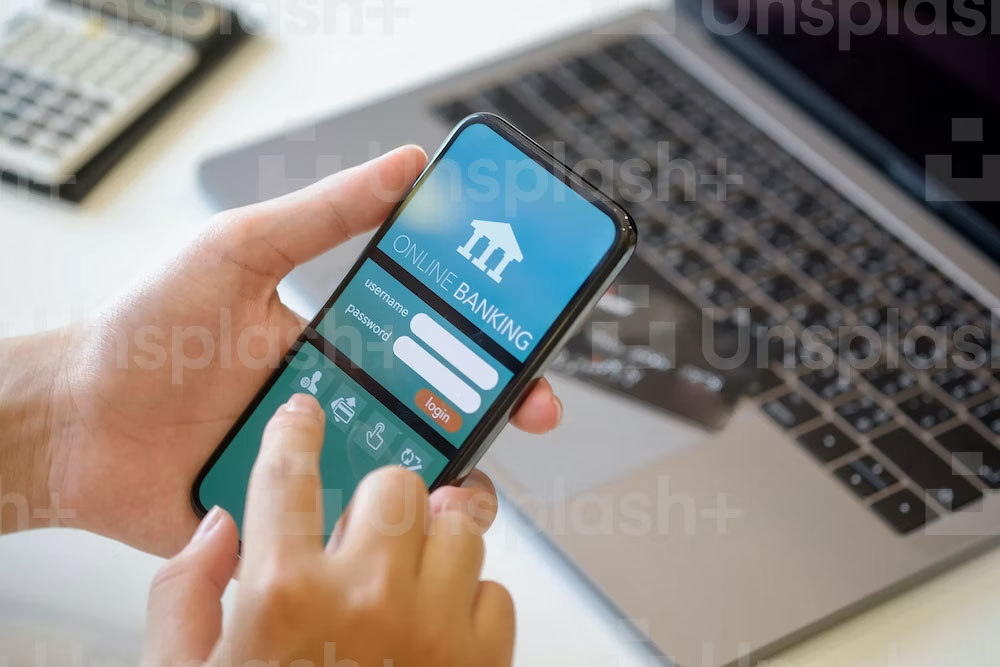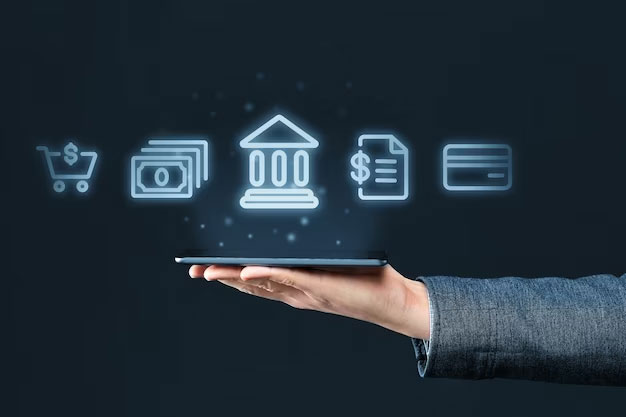Is Mobile Banking Safe
Feb 04, 2024 By Triston Martin
Gone are the days when you had to stand in long lines at a bank just to make deposits and withdrawals. With the humble beginnings of mobile banking over a decade ago, it didn’t take long for banks worldwide to recognize that trend and begin providing customers with mobile access to their accounts.
While mobile banking has increased convenience for millions of bank customers, there is still some doubt about its safety. So what exactly is the answer? Is mobile banking safe? By reading this blog post, you will gain insight into the security considerations and risks associated with using them so that you can decide for yourself if it’s worth engaging in.
Mobile Banking

Mobile banking is a service provided by banks and other financial institutions that enables customers to access and manage their banking accounts through mobile devices such as smartphones and tablets. It encompasses a range of services, including the ability to check balances, transfer funds, pay bills, deposit checks and locate ATMs or branches. Mobile banking has become increasingly popular worldwide and is replacing traditional banking methods.
Different Types of Mobile Banking

The security of mobile banking depends on the type of service being used. Generally, the two most common types are SMS-based and app-based services.
SMS-Based Banking
With this method, customers send an SMS message to their bank with specific instructions such as transferring money or checking their balance. The bank then sends an SMS message with the requested information. This method is convenient and easy to use, but it’s also less secure than other methods due to its reliance on unencrypted messages that third parties can intercept.
App-Based Banking
This type of banking involves customers downloading a dedicated app from their bank and using it to access their accounts. App-based banking is more secure than SMS-based banking since the app is encrypted and transactions are protected by a password, PIN, or biometric authentication (fingerprint/face recognition).
Is mobile banking safe?
The short answer is yes; mobile banking can be safe if used correctly. Financial institutions have invested heavily in securing their systems to protect customer data and funds from unauthorized access or theft. For example, many banks use multi-factor authentication, such as sending a code via text message that the customer must enter before they can access their accounts.
It’s important to remember that no system is completely secure, and users must still take precautions when using mobile banking apps.
Benefits of Mobile Banking
- Convenience: Mobile banking allows customers to access their banking accounts from anywhere at any time, making it much more convenient than traditional banking methods.
- Speed of transactions: Mobile banking apps are often faster and more efficient for completing financial transactions than a bank branch or ATM.
- Security features: Most mobile banking apps have security features such as multi-factor authentication and encryption technology which can help protect against unauthorized access or theft of funds.
- Lower fees: Some banks offer discounted or waived fees when customers use mobile banking compared to other banking methods.
- Easy to use: Most mobile banking apps are designed with user-friendly interfaces, which makes them easy to navigate and use, even for those who need to be tech-savvy.
- Access to detailed account information: Mobile banking apps typically provide customers with more detailed information about their accounts than traditional banking methods, such as specific transaction histories and balances.
- More control over finances: Using mobile banking apps can help users better track and manage their money, giving them more control over their spending and saving habits.
- Customization options: Some banks offer additional customization options so customers can personalize the look and feel of their mobile banking app.
- Increased customer service: Banks that offer mobile banking often provide higher levels of customer service due to increased efficiency in completing transactions and improved access to account information.
With the right approach and precautions, mobile banking can be a secure and convenient way to manage your finances. From increased convenience and speed of transactions to lower fees and detailed account information, many benefits are associated with using mobile banking apps.
Which is safe mobile banking or internet banking
The answer depends on the security measures taken by each bank or financial institution. Mobile banking apps are generally more secure than internet banking due to the additional layers of encryption and authentication methods. However, internet banking can still be safe if the appropriate security measures are taken by the bank or financial institution, such as two-factor authentication and strong passwords.
The safety of either mobile banking or internet banking will depend on how well the security measures are implemented. It is important for customers to be aware of these measures and to choose a bank with the highest level of security for their needs.
How to spot potential scams when banking online
One of the most important things customers can do to ensure their safety when using mobile banking is to be aware of potential scams. Cybercriminals are constantly looking for new ways to trick unsuspecting users into divulging sensitive information or downloading malicious software, so customers need to know how to spot them. Here are a few tips on spotting potential scams:
- Unsolicited phone calls or emails – Be wary of unsolicited phone calls, emails, or text messages claiming to be from your bank. Legitimate banks will never ask for sensitive information such as passwords or credit card numbers via email, so any requests should be treated with suspicion.
- Fake websites – Before entering personal or financial information online, ensure you are on a legitimate website. Look for the padlock icon in the address bar to ensure the website is secure, and look out for spelling mistakes or domain names that don’t match your bank’s name.
- Inaccurate account information – If you notice any inaccuracies when looking at your account information or if unexpected charges appear, contact your bank immediately.
By being aware of potential scams and taking steps to protect yourself, you can ensure that your mobile banking experience is safe and secure.
Tax implementation on Mobile Banking
Depending on the country in which it is available, mobile banking apps could have varying tax implications. Utilizing a mobile banking app may incur taxes in some nations, such as Value Added Tax or Goods and Services Tax (GST). (GST).
Therefore, customers should consult with local tax authorities to understand applicable and associated tax implications. Customers should know any fees their bank or financial institution imposes for using a mobile banking app. These fees may vary depending on the completed transaction type and are usually disclosed in the terms and conditions.
FAQS
How secure is mobile banking?
Mobile banking is generally more secure than internet banking due to the additional layers of encryption and authentication methods. However, it is important for customers to be aware of the security measures taken by their bank or financial institution and to choose one with the highest level of security for their needs.
Is it safe to download a banking app?
Yes, it is safe to download banking apps as long as the source is legitimate and the device you are downloading it on has up-to-date security measures. Be sure to use strong passwords and two-factor authentication if available.
Which is the better mobile banking App?
It depends on the individual needs of each customer. Some apps may offer better security features, while others may be more user-friendly or have more features. Customers must research different banking apps to find one that best meets their needs.
Conclusion
With the proliferation of online banking, transferring money between different bank accounts has become fast and easy. You no longer have to worry about visiting physical branch locations and waiting in line. You can transfer funds quickly and securely if you know your routing numbers and account information. Be sure to check with your bank provider to determine what kind of transfers they allow — some may have restrictions.








